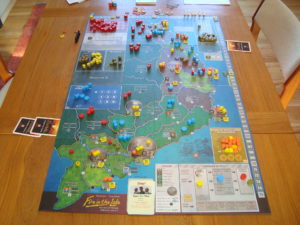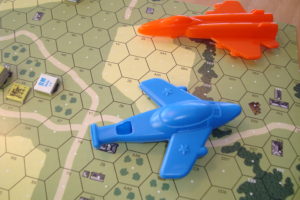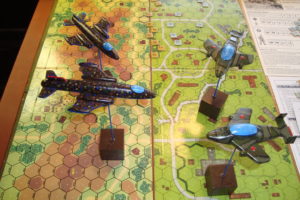Last post I described the descent into ASL. Not content to stop there, am in a controlled free-fall into another gaming vortex.
Just like the aircraft fetish described earlier, I have developed one about armor skirmish games using interwar/early WW2 tanks. This has been about 6-12 months in the making. First thought about ASL, but that was too complicated. The Infernal Machines module for Landships has interwar armor, but it is also a complicated board game. The old SPI Kampfpanzer has flaws and can be spendy. I really wanted miniatures, not cardboard.
Then I started messing around looking at Shapeways’ 3D models, which come in a variety vehicles and scales, but are not cheap. Here’s a link to one provider. Lots of possibilities, but I was having trouble finding rules that were fast, fun and in no-way -shape-or-form like Tobruk.
Somehow, someway I found Tanks. The game is a late war, 15mm, skirmish-game offshoot of Flames of War (FOW), but uses plastic models that are easy to assemble. The starter pack is relatively inexpensive, and you can even read download the rules from their website. Also, the scale (more about that later) is compatible with all the FOW stuff that’s out there. Here’s the Boardgamegeek page with reviews. I’d summarize it as a miniatures, tank skirmish, version of Heroes of Normandie (HON), without some of the hyperbole.
Each tank has a capabilities card, which can be augmented by crew-members with varying skills. The components are first class, and even include some good quality (again, think HON) 2D terrain pieces. As earlier mentioned, I found assembly very easy, with plenty of painting guides at the Tanks homepage. You can even build different versions of each tank. The Sherman was a little more problematic. I wound up going over to the FOW website for more , especially when in comes to peripheral items. The basic instructions are, well, basic.
For earlier tanks it will be a matter of making up my own cards.
My initial purchase included the Starter Set, which has two Shermans and a Panther, as well as a M10 Tank Destroyer and PZ IV. The individual tanks (which come with cards) are about $10.00 each. The folks at Amazon offered Zvezda PV IVs at $4.95 each, so I grabbed a couple.
I discovered that Zvezda offers a number of early war British, German and Russian tanks and at a lower price than their FOW counterparts. Fantastic! Ahhhhhh…..but there’s scale. The Zvezda tanks are 1/100, which is a little over 16mm. The Tanks models are supposedly 15mm. OK, not very much difference, right? Take it from me, the Tanks models are noticeably larger than the Zvezdas, and they should be smaller!
Now to the controlled descent part of the post……..
Step 1: Finish up Starter Set and the two Tanks models. Start play in a late-war mode. Gauge enjoyment (it’s not a simulation).
Step 1a: Download paper building models and/or use HON terrain buildings. If all of this is fun, go to Step 2.
Step 2: Buy Zvezda models. BTW, they are “snap fit”, with few pieces, good fit, and detail enough for me. Mess around with cards and enjoy France 1940 and Russia 1941 skirmishes.
Step 3: Shapeways for Japanese tanks (vs. Russians 1939 or Chinese), as well as fictional interwar fights using early British tanks/tankettes.
Hope to finish up assembly/prime/black base coat of all Step 1 models this weekend.


